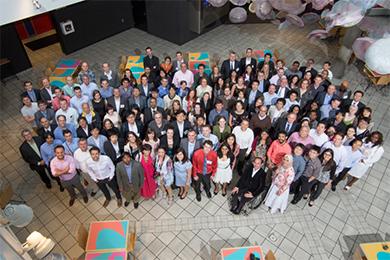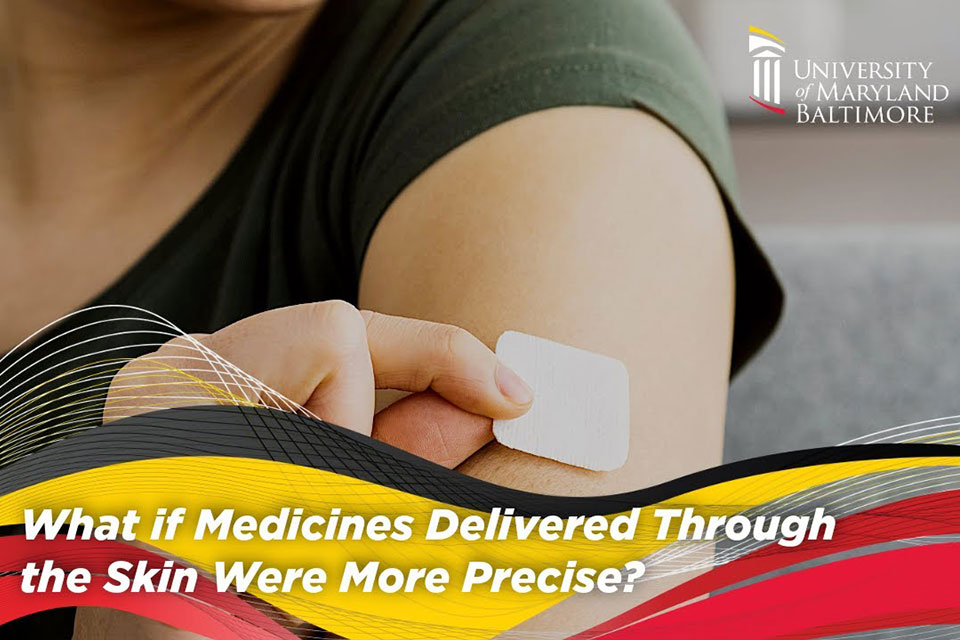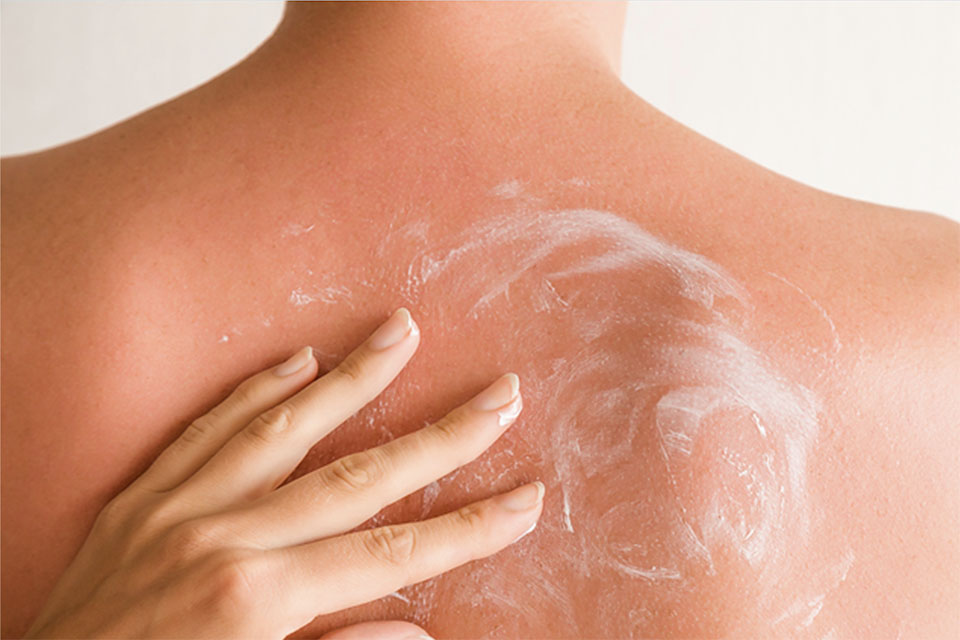SOP Hosts Third International Conference on Microneedles
Event brings together researchers from academia, industry, and government to network and share the latest developments in microneedle technology and applications.

By Malissa Carroll
June 11, 2014
The University of Maryland School of Pharmacy welcomed more than 200 researchers from 25 countries to the Third International Conference on Microneedles held May 19-21. Hosted by Audra Stinchcomb, PhD, professor in the Department of Pharmaceutical Sciences at the School, the conference showcased the latest international developments in microneedle technology and applications, and provided a forum to facilitate interdisciplinary communication and new collaborations among participants.
Natalie D. Eddington, PhD, FCP, FAAPS, dean and professor of the School of Pharmacy, welcomed participants to the conference and School. “As one of the top-ranked schools of pharmacy in the United States, the School of Pharmacy is committed to expanding scientific knowledge across the spectrum of drug discovery, drug delivery, and translational research. Dr. Stinchcomb has organized an excellent conference that includes a number of invited and keynote speakers who will present highlights from their research and review state-of-the-art developments in the microneedles field. This valuable information will not only help expand your current knowledge, but also invigorate your research activities,” she said.
The conference was sponsored by PermeGear, Inc., Lohmann Therapie-Systeme (LTS) AG, Inovio Pharmaceuticals, Inc., the American Association of Pharmaceutical Scientists (AAPS), and the School of Pharmacy. Posters and presentations highlighted the latest scientific, technological, and clinical results relating to microneedle technology.
Microneedles are microscopic needles that can be applied to the skin on a patch to draw blood or deliver drugs.
“Since the Second International Conference on Microneedles in 2012, it has been very exciting to watch the field grow in both the quantity as well as quality of research,” said Stinchcomb in her opening remarks to conference attendees. “The School of Pharmacy is committed to fostering partnerships with members of our international community, and with an astonishing 77 percent of our audience visiting from outside of the United States, this is truly an international conference that promises to be a lively mix of discussions from members of academia, industry, and government.”
Keynote lectures for the conference were presented by Mark Prausnitz, PhD, the Love Family Professor in Chemical and Biomolecular Engineering at the Georgia Institute of Technology; Roger Narayan, PhD, MD, professor in the joint Department of Biomedical Engineering at the University of North Carolina and North Carolina State University; and Mark Kendall, PhD, professorial research fellow at the Australian Institute for Bioengineering and Nanotechnology and affiliate professor at the University of Queensland. These presentations showcased recent developments in the use of microneedles for drug and vaccine delivery, microneedle-based sensors, and skin biomechanics, respectively.
“The skin poses a significant barrier for drug absorption,” said Prausnitz. “As a result, hypodermic needles are typically used to introduce vaccines and other medicines into the body. However, research indicates that there is truly no need to use a long needle that penetrates both the skin and underlying tissue to introduce these medications. Rather, we can use microneedles to penetrate the outermost layer of skin, thereby administering the drug into the body and reducing pain and trauma to the patient.”
Other posters and presentations focused on recent developments in the design and technology of microneedles, clinical and pre-clinical research findings, coatings and formulations, fabrication and materials, immunology, packaging and deployment, and regulatory issues.
“Attending this conference has been an amazing experience,” said Bing Cai, a graduate student studying the potential use of ceramic materials in microneedle development at Uppsala University in Sweden. “I was truly impressed by the selection of speakers and the different perspectives that the lectures offered. Because I’m new to this area of research, this conference has provided a great opportunity for me to learn about what other researchers are doing in the field and to network with a number of remarkable individuals.”
“I’ve been fortunate to attend all three of the International Conferences on Microneedles,” added Laurence Hayward, venture capitalist and member of the Board of Directors for 10x Technology, located in Libertyville, Ill. “Each conference has been excellent, and I have been really fascinated by the quality and quantity of discoveries being presented.”
For information about the next International Conference on Microneedles, please visit www.international-microneedles.org. This website will be updated as new information about the conference becomes available.



